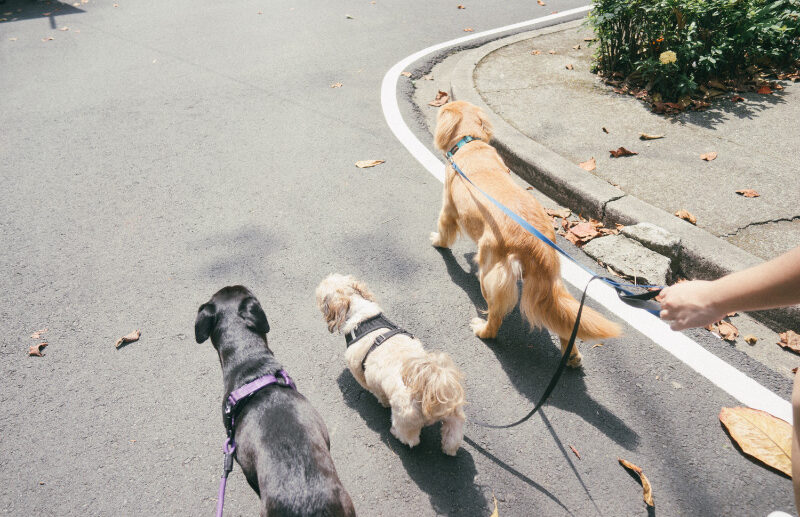
The first week of October marks National Walk Your Dog Week, and it’s with great timing in regions that are transitioning to mild weather and refreshingly cool temperatures.
If your dog is like most, the mere sight of their leash sends them in a waggy, happy-go-lucky frenzy. Dogs just love going on long walks with their favorite humans. Potty breaks in their backyard or quick trips around the block just don’t offer the same benefits as a real walk.
Learn five surprising reasons to take a 20-minute walk with your dog every day this week.
1. Sniffing on walks helps anxious dogs find their zen.
Dogs that struggle with anxiety tend to experience a high baseline level of stress. They may have trouble responding to training, being alone, or coping with everyday stressors. One research study conducted in France showed that when dogs spend just five minutes sniffing, their heart rate decreases, and they start to relax. Keep in mind that dogs don’t get the same benefits when we rush them past their favorite sniff spots. Don’t forget to stop and smell the roses!
2. Walking is a low-impact exercise.
While high-impact exercises, especially those that involve jumps and sharp turns, can put some dogs at risk for soft tissue injuries, walking is a relatively safe activity for dogs of all ages and fitness levels. Puppies whose growth plates have not yet closed, senior dogs with arthritis, and young dogs alike can enjoy a leisurely walk to get fresh air and burn calories with little risk of injury.
3. Dog walks improve digestion.
Walking helps speed up the movement of food from the stomach to the intestines, helping to reduce heartburn and indigestion in dogs with stomach issues. Many dogs need to relieve themselves after breakfast and dinner, so it can be a good time to go for a walk. However, take care with dogs prone to bloat, as too much activity after meals has been linked to bloating episodes.
4. Walking improves sleep.
Exposure to sunlight and moderate activity can help regulate your dog’s sleep cycle and promote the production of melatonin at bedtime. With the end of Daylight savings time coming up next month, dogs everywhere will struggle to adjust as their wake-up time, meals, and bedtime fall an hour later. Adding a daily walk to your routine this month can help prepare your dog to get in sync with your schedule.
5. Walks can reduce joint pain.
While exercise can be painful for senior dogs with osteoarthritis, lightly paced walks can actually help reduce pain. Walking increases blood flow to the joints, supplying nutrients to the cartilage and lowering inflammation. Moderate exercise also strengthens the muscles surrounding the joints, providing more support and combating muscle loss often seen with osteoarthritis.
Walking Your Dog For Better Health
If you’re just starting to walk with your dog on a regular basis, remember to start slowly, especially if they have arthritis or another chronic condition. Limit exercise to no more than ten to twenty minutes at a time for growing puppies to prevent growth plate injuries. For young, healthy adult dogs, walking long distances can be a great way to spend time together and keep your dog in shape. Just remember to take plenty of breaks for drinking water, resting, and taking in the great outdoors.





